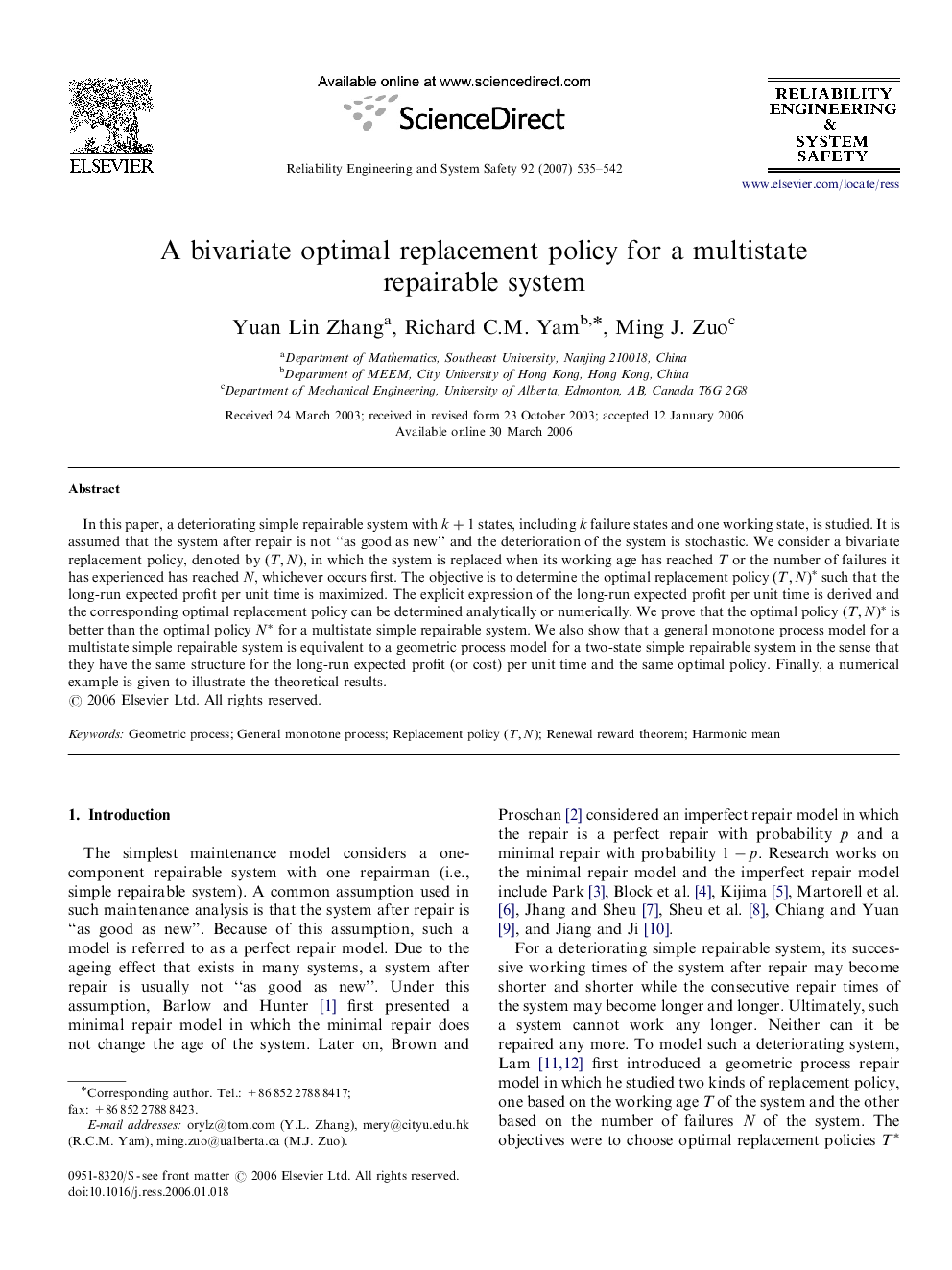| Article ID | Journal | Published Year | Pages | File Type |
|---|---|---|---|---|
| 808454 | Reliability Engineering & System Safety | 2007 | 8 Pages |
In this paper, a deteriorating simple repairable system with k+1k+1 states, including kk failure states and one working state, is studied. It is assumed that the system after repair is not “as good as new” and the deterioration of the system is stochastic. We consider a bivariate replacement policy, denoted by (T,N)(T,N), in which the system is replaced when its working age has reached T or the number of failures it has experienced has reached N , whichever occurs first. The objective is to determine the optimal replacement policy (T,N)*(T,N)* such that the long-run expected profit per unit time is maximized. The explicit expression of the long-run expected profit per unit time is derived and the corresponding optimal replacement policy can be determined analytically or numerically. We prove that the optimal policy (T,N)*(T,N)* is better than the optimal policy N*N* for a multistate simple repairable system. We also show that a general monotone process model for a multistate simple repairable system is equivalent to a geometric process model for a two-state simple repairable system in the sense that they have the same structure for the long-run expected profit (or cost) per unit time and the same optimal policy. Finally, a numerical example is given to illustrate the theoretical results.
